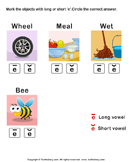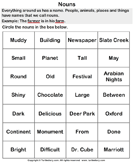- HOME
- KIDS SCIENCE EXPERIMENTS
- SINGULAR PRONOUNS
Singular Pronouns

 Most browsers are no longer supporting Flash games.
We are working on making Flash playable in your browser or we will replace this game with a version that does not need Flash. Our team is actively working on it. Please check back later and keep enjoying our non-Flash games !!
Most browsers are no longer supporting Flash games.
We are working on making Flash playable in your browser or we will replace this game with a version that does not need Flash. Our team is actively working on it. Please check back later and keep enjoying our non-Flash games !!
Singular Pronouns
Pronouns are the words that take the place of nouns. A singular pronoun takes the place of a noun that names only one person, place, or thing.
Here is an example of a singular pronoun taking the place of a singular noun.
| EXAMPLE | EXPLANATION |
| • The student asked a question. | • Student is a singular noun. |
| • She asked a question. | • The pronoun she takes the place of the noun student. She is a singular pronoun. |
A list of singular pronouns
The table below contains pronouns that are always singular. These pronouns cannot be used as plural pronouns. When singular pronouns refer to a person, they use either the first, second or third person perspective or point of view or place. Perspective is the view point at which a singular pronoun comes.
| Singular Pronouns & Their Perspective | |
| I | First person |
| Me | First person |
| Myself | First person |
| Yourself | Second person |
| He / His / Him / Himself | Third person |
| She / Her / Hers / Herself | Third person |
| It / Itself | Third person |
Read the examples below to learn how singular pronouns are used in sentences:
1. I took the job at school.
I tells who is speaking, and we know there is only one person speaking.
2. Would you like to go with me?
Me tells who is speaking, and we know there is only one person speaking.
3. I took the decorations down myself.
Myself is used to restate the pronoun I, and we know there is only one person speaking.
4. Caroline, are you able to do this yourself?
Yourself indicates who is being spoken to (Caroline) and we know there is only one person being spoken to.
5. He jumped off the high dive last week!
He is a singular pronoun and it refers to one male person.
6. He took the trash out himself.
Himself indicates that only one person (male) did the action.
7. She went to the banquet by herself.
Herself indicates that only one person (female) did the action.
8. The house isn’t going to clean itself!
Itself indicates one object, the house.
Pronouns that are both singular and plural
Some pronouns can be used as either singular or plural, depending on the context of the sentence. The pronouns you, that, which and who can apply to either one or more than one person, place, thing or idea.








